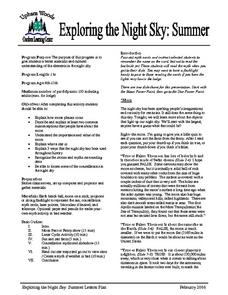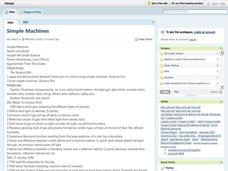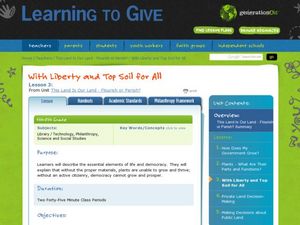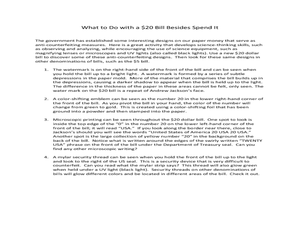Curated OER
Survival Strategies and Adaptation in Insects
Third graders investigate insects and their adaptations that help them survive. For this survival strategies lesson, 3rd graders view photographs of insects and discuss the adaptations that each one uses to survive, including camouflage...
Curated OER
Paper Molas
Delve into the history of textile art using this resource. Learners discuss the history of molas, a type of textile art made in Panama and Columbia, and talk about the importance of this process in the Kuna culture. Then, they create...
Curated OER
How Do Bats Navigate At Night?
Through an experiment, learners explore how bats use echolocation. First, they discuss how sound travels through air waves. Then, they talk about the ways bats navigate in the dark. As an extension, they can write about what they have...
Curated OER
Literary Terms for Sophomore English Vocabulary Assessment
Sophomores record the definitions and examples of a series of literary terms and then create their own example of the word. Designed as an assessment, the presentation could also be used as an introduction or as a review.
Curated OER
Modals: Can, May and Will Verbs: Present Tense
Cover can, may, will, and shall with this lesson plan on using modals in the present tense. Starting off with a warm-up activity, the resource includes a text to analyze, examples of modals, and exercises with answers. The language in...
Curated OER
Eagle Nebula - Close-up
In this Eagle nebula worksheet, students solve 4 problems including finding the size of the nebula field, determining the scale of the image, determining how large the nebula is in millimeters and determining the size of the smallest...
Curated OER
Rate of Photosynthesis
Young scholars investigate the rate of photosynthesis using elodea leaves. In this photosynthesis lesson plan, students place elodea in a test tube filled with water. They include baking soda and place the test tube under a lamp. Young...
Curated OER
Rotation Velocity of a Galaxy
In this orbit of stars in galaxies worksheet, students are given an equation that models the orbital speeds of stars as they relate to their distance from the nucleus of a galaxy. Students solve 5 problems using this equation and...
Curated OER
Applied Science - Physics Lab
Students investigate electricity. In this Physics lesson, students experiment with insulators and conductors of electricity. Students use batteries as the energy source for the experiment.
Curated OER
Shadow Puppets
Learners examine the role of shadow puppets. They create their own puppet and put on a play.
Curated OER
Story Telling with Black & White Photography
4th-8th graders will explore Wright Morris' photography and create their own black and white photographs. They will then use the photographs to portray a message they want communicated by writing a narrative telling a story about the...
Curated OER
Solar Storm Energy and Pie Graphs
In this solar storm energy and pie graphs worksheet, students solve 5 problems using pie graphs that show the amount of solar energy that is converted into radiation, kinetic energy, flare energy and flare energy that is lost to working...
Curated OER
Calculating Black Hole Power
In this black hole activity, learners use a given equation that relates the rate of matter falling into a black hole to the power emitted by the black hole to determine accreted mass.
Curated OER
What is Lightning?
Students experiment with electricity to understand lightning. In this lightning lesson, students show how static electricity causes lightning. Students discuss questions about their experiment and gather important facts. Students...
Curated OER
Exploring the Night Sky: Summer
Students explain how moon phases occur. They describe and explain at least two common misconceptions that people have about the moon. Students explain what a star is. They explain 3 ways that the night sky has been used throughout history.
Curated OER
Photosynthesis
In this photosynthesis worksheet, students complete 20 various types of questions related to photosynthesis. First, they match each description in the first column with the correct vocabulary term in the second. Then, students explain...
Curated OER
Leaf Chromatography
In this leaf chromatography worksheet, learners separate the pigments of a leaf using paper chromatography. They answer 4 questions about their results and draw the colors they observe on their chromatogram from the leaf.
Curated OER
Electrical Circuits
Students compare series and parallel circuits. In this electricity and circuits lesson, students roleplay as a "wire" passing an energy ball to demonstrate how a series circuit works and how the circuit can be broken. Students construct...
Curated OER
Create Your Own Ad
Students examine the elements of advertising. They analyze the format and structure of advertisements. They develop awareness of advertising techniques and explain that media messages and products are composed of a series of separate...
Curated OER
Simple Machines
Students engage in a lesson that is concerned with the concept of a simple machine and uses the law of motion to justify why they operate. Students explore the laws by constructing some simple machines to illustrate the concepts.
Curated OER
The Peppered Moth
In this evolution activity, students read about the changes the peppered moth went through over 100 year time period. Students complete 3 short answer questions based on what they read.
Curated OER
With Liberty & Top Soil for All
Learners compare the basic needs of plants to the basic needs of democracy. For this democracy comparison lesson, students complete a worksheet on what happens to a plant that's not nourished. Learners draw a correlation to the basics of...
Curated OER
What to Do with a $20 Bill Besides Spend It
Students explore the concept of anti-counterfeiting measure. In this economics lesson, students use science equipment to discover anti-counterfeiting designs. Students then explore other denominations of bills.
Curated OER
Applied Science -Physics (2B) Pre Lab
Second graders look at different types of energy. In this energy lesson, 2nd graders define energy and the difference between kinetic and potential energy. They see examples with falling books and a slinky.























